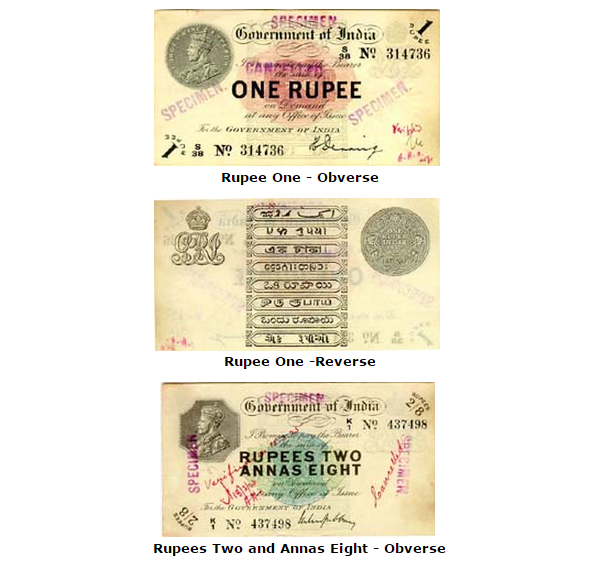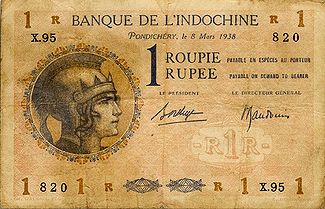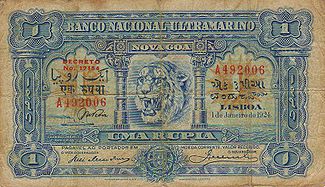The new notes are set to be predominantly pink and green on both sides, in combination with other colours. An image of the oil exploration rig of Sagar Samrat off the Mumbai coast will feature on the reverse, much like the older notes of the 1980s and '90s.
Printing and circulation of Rupee One notes were stopped in 1994, when the government made a complete switch to coins of that denomination. Unlike notes of other denominations, which are printed by the RBI, one rupee notes were always printed directly by the central government, along with rupee coins, under the Coinage Act.
The new notes will also be printed by the central government, to serve as legal tender along with the older one rupee notes.
As collectors and currency enthusiasts prepare to add a brand new note to their archives, here is a walk through the history of Rupee One notes in India.
Before 1947
The introduction of small denomination notes in India was connected directly with war-time adversities. The very first Rupee One note was printed on November 30, 1917, during World War I, with a portrait of King George V on the front and the words "one rupee" on the reverse in eight regional languages.

Photo: rbi.org.in
According to Bangalore-based blogger and currency enthusiast Rezwan Razack, 25% of these Rupee One notes were issued in small booklets of 25 notes each.
This note was followed soon after by the note of Rupees Two and Annas Eight, but both were discontinued by 1926.
Rupee One and Rupee Two notes were reintroduced during the second World War. Although many of them were dated 1935, they were issued in August 1940. This time, Rupee One notes carried a portrait of King George VI.

Photo: Wikimedia Commons.
The British, however, were not the only rulers to issue currencies in India – notes and coins were issued separately by the princely state of Hyderabad, the Bank of Indochina in France (for French colonies) and the Portuguese government in its colonies.

The French Indian Rupee and the Portuguese Indian Rupia. Photos: Wikimedia Commons
After 1947
During British rule, one rupee comprised 16 annas, but with independence came a new system of division, where each rupee was equal to 100 naye paise, or new paise.
A new design was introduced in 1949, devoid of the symbols of the British colonisers. According to the RBI website, the government first considered a portrait of Mohandas Gandhi to replace King George, but it finally settled on a picture of the Lion Capital of Ashoka – which was subsequently made the official emblem of India in 1950.
Rupee One, 1949, obverse and reverse. Photos: indiabanknotes.com
In 1969, issued the only Rupee One note featuring Gandhi, in a commemorative issue celebrating his birth centenary.
Photo: indiabanknotes.com
Then in 1981, a new design featured an image of India’s oil exploration rig Sagar Samrat, which is set to be retained in the new pink and green Rupee One notes the RBI wants to re-introduce.
Photo: indiabanknotes.com















